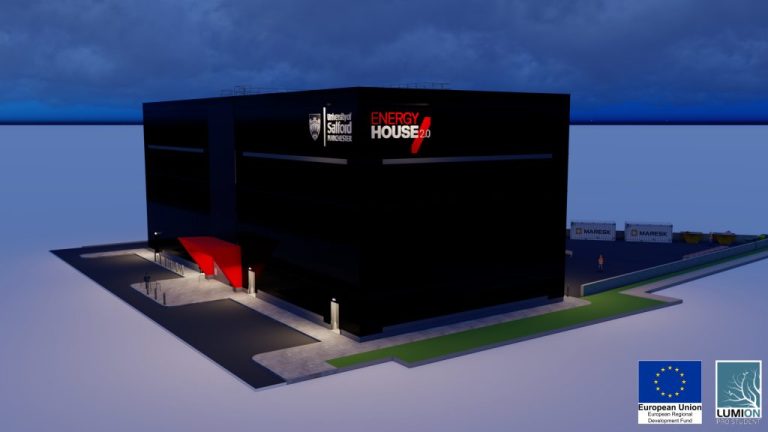The University of Salford’s Energy House Laboratories yesterday (18 November, 2021) announced its first collaborative project partners ahead of the launch of its multi-million-pound Energy House 2.0 research facility in 2022. Among the partners included are residential housebuilder Bellway Homes, development partnership, The English Cities Fund (ECF), and a joint venture between construction materials and solutions firm Saint-Gobain and Barratt Developments. Across the studies, the organisations will be supported by leading academics from the University of Salford in a bid to tackle some of the built environment’s biggest challenges when the state-of-the-art research and testing facility opens next year. Building on the success of the Salford Energy House, a two-bedroom terraced house constructed inside an environmentally controllable chamber, Energy House 2.0 will have the capacity to replicate a total of four, fully furnished houses across two environmental chambers which can replicate climatic conditions and environments experienced by 95% of the global population. The £16 million research facility, part-funded by the European Regional Development Fund (ERDF), aims to work with businesses and manufacturers in the built environment to support global ambitions to reach carbon reduction targets by 2050 and deliver net zero future housing. For more than a decade, the University of Salford’s Energy House Laboratories has been leading the way in low carbon innovation in the home. Professor William Swan, Director of Energy House Laboratories said: “Domestic energy and heating is a major source of carbon emissions and this was a hot topic at the recent COP26 Climate Change conference in Glasgow this month. It has clearly been acknowledged by world leaders that we need to act now to protect our planet. “Homes and the built environment contribute around 40% of the UK’s total carbon footprint, and the global picture is similar. That’s why we’re so excited to announce new partnerships, which will help our work with key players in the private sector to drive innovation and solutions that that address global, domestic energy efficiency challenges – making a world of difference to our future and our planet.” The unique research facility will allow partners to innovate, test and validate housing design, home heating and approaches to using a variety of energy technologies. Each of the research partners will be building a house in one of the state-of-the-art environmental chambers within the facility and will investigate distinct challenges over an estimated nine months: Bellway: The Bellway Homes house at Energy House 2.0 will allow the property developer to put customers first by testing how low carbon heating technologies will work in combination with building fabric, efficient services, and renewable energy generation in real world scenarios. As well as reducing a home’s carbon footprint, Bellway will also be looking at the most cost-efficient ways to help customers reduce their energy bills. The English Cities Fund (ECF): National development partnership, The English Cities Fund – a strategic joint venture between leading urban regenerator, Muse Developments, Legal & General and Homes England – will build an apartment-style building at Energy House 2.0 to explore and investigate commercially viable net-zero innovation that can be adopted in their construction. The findings will be applied to influence the delivery of new homes within the £1bn, 50-acre Salford Central masterplan, and the £2.5bn, 240-acre Crescent masterplan. Saint-Gobain: Saint-Gobain, the global building materials and solutions group will bring research on its modern, light, and sustainable construction solutions to the Energy House 2.0 facility helping demonstrate how its solutions can help meet and exceed the standards for homes in the future. It will use the facility for real-world testing of a building’s performance helping enable the rapid testing new solutions. Energy House Laboratories and the Energy House 2.0 partners are looking to collaborate further with businesses across the UK and globally that may be interested in supporting their studies. For more information about the Energy House Laboratories and to find out more about the projects, please visit: www.energyhouse2.com





